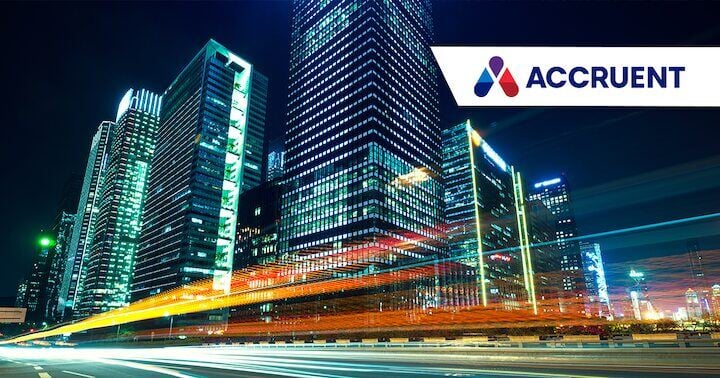
GASB 87 Implementation Guide
GASB 87 Implementation Guide Information On This Page: What is GASB 87 When Does GASB 87 Need to Be Implemented? Implementation Guide: How Can ...
Solutions
Workplace Management Solutions
Real Estate Management Solutions
Maintenance Management Solutions
Energy Management Solutions
Engineering Document Management Solutions
Asset Management Solutions
Automate campus scheduling for classes, meetings, and exams with our EMS software.
Plan and manage conferences effortlessly with EMS software to impress guests and streamline operations.
Boost workplace flexibility and maximize space use with seamless desk and room booking.
Organize workplace or campus events smoothly, creating memorable experiences.
Optimize workspace, manage allocations efficiently, and reduce costs with our space management solutions.
Deliver projects on time and within budget by improving communication, collaboration, and efficiency with our software.
Streamline lease accounting for ASC 842, IFRS, and GASB compliance.
Manage leases efficiently by tracking key dates, analyzing costs, and ensuring compliance.
Centralize data and analytics for better insights, faster negotiations, and revenue growth.
Centralize facility and asset maintenance, automate work orders, and ensure compliance with our CMMS software.
Extend asset life, reduce downtime, and prevent costly repairs with data-driven monitoring.
Prevent equipment failures and extend asset life by detecting and addressing issues early.
Make sustainable, cost-efficient energy decisions by monitoring and optimizing power consumption.
Remotely monitor and control equipment with real-time data to predict issues, boost efficiency, and reduce downtime.
Easily share and collaborate on documents, creating a single source of truth for engineers and contractors.
Manage and analyze assets across their lifecycle to schedule maintenance, reduce downtime, and extend lifespan.
Improve visibility, automate work orders, and ensure compliance for efficient facility and asset management.
Resources
Browse our full library of resources all in one place, including webinars, whitepapers, podcast episodes, and more.
Support
Looking for access to technical support, best practices, helpful videos, or training tools? You’ve come to the right place.
About Accruent
Get the latest information on Accruent, our solutions, events, and the company at large.

A lot can go wrong when you're implementing new technology — and no one wants to risk poor adoption or failed implementation. Here's how to get IoT right.
Table of contents
By Susan Buchanan, Senior Director, Assessment Services
Based on its overall business goals, each company will have different values and, therefore, different strategies. For instance, one firm may focus on investments to improve the quality of the indoor work environment, while another may focus on reducing the impact of carbon emissions.
The many potential greening initiatives a company can undertake compete with a myriad of other capital and operational investments. These include systems renewal, building renovations, and new construction. While companies may analyze opportunities to improve building sustainability, ultimately these investments will need to be assessed in relation to other building requirements.
Companies that are just beginning the process of integrating green programs into their capital plans may choose to initially focus on relatively low-cost initiatives. These can deliver short-term paybacks by reducing energy and natural resource consumption — with the priority based on cost savings and other desired benefits.
By combining this information with detailed data about overall requirements across a building portfolio, companies can get a holistic view of facility needs — allowing them to improve operational conditions and maximize efficiency, while promoting a sustainable built environment. Finding this data and making these decisions can be a daunting task, but here are a few simple steps to follow when considering facility and sustainability upgrades.
The first step in identifying the best investment strategy for sustainability is an objective evaluation of a company’s current state of sustainability and its options for change — including estimated costs and potential benefits. Company management should determine the answers to several questions before establishing a sustainability framework.
Financial metrics will obviously have an impact on how a company evaluates its sustainability initiatives. When a firm looks at its deferred maintenance, maintaining facilities, and keeping them going through their lifecycle, it would normally look at an in-kind or conventional replacement. If there are green alternatives, companies should consider several financial metrics while evaluating each option.
One easy way to evaluate the cost of green alternatives is to determine the cost as a percentage of current asset replacement value. If the cost of making a facility sustainable starts approaching the value of the facility itself, it obviously is not a financially viable alternative.
A company should also consider “the triple bottom line.” A capital plan that includes green initiatives that hit the financial impact on the company, the facility’s impact on the environment, and the company’s social responsibility may be the best alternative.
This blog post is derived from Susan Buchanan’s article, “Integrating Sustainability Programs into the Facilities Capital Planning Process,” which originally ran in the March/April 2011 issue of Facilities Manager, the official magazine of APPA. To read the full article, visit here. To learn more about APPA, visit appa.org.
GASB 87 Implementation Guide Information On This Page: What is GASB 87 When Does GASB 87 Need to Be Implemented? Implementation Guide: How Can ...
What can you expect from your Lx Contracts implementation? Prepare your organization so you can meet compliance goals, centralize data, and boost ...
When implementing a computerized maintenance management system (CMMS), one of the first steps is to submit an RFP to potential vendors. Here's how.
Subscribe to stay up to date with our latest news, resources and best practices.
* To unsubscribe at any time, please use the “Unsubscribe” link included in the footer of our emails.